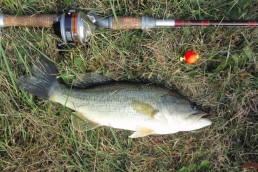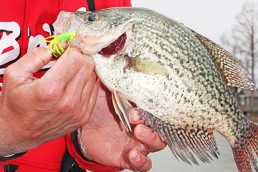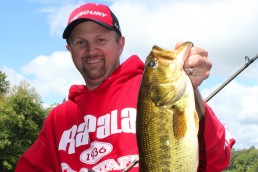A + B = C: The Formula for Success
SHARE THIS POST
The Formula for Success: June is a wonderful month for catching largemouth bass. As the water temperatures climb, bass in ponds, lakes and rivers feel the primal urge to seek mates and reproduce. As their metabolic rates increase, they leave their deeper winter lairs and move toward the shallower water when the spawning urge no longer can be denied. This usually happens about the same time when the Midwest angler can no longer tolerate it and grabs his tackle box and heads for the water.
The two life forms—fish and man—are about to meet again.
If this sounds familiar, then perhaps a bit of advanced planning can increase your odds of catching more rather than returning to the couch empty-handed. Apply a simple algebraic formula: A-approach + B-presentation = C-Success. For “A,” the approach, think about this before you get out of your vehicle. Many bass in ponds or lakes are going to be in fairly shallow water in early June. They are feeling urges that they have not felt for a year and are feeding more than they have for months, so chances are the bass will be spooky, especially if it’s sunny. Approach slowly and carefully so as not to scare them. The ground may still be wet from any rain, and if you stomp on the ground you might send vibrations into the water. The fish may pick these up on their sensitive lateral lines and scatter. Move in half circles, making fan-casts while you remain stationary. Then, when you have thoroughly fished the area, walk quietly back beyond your longest cast to another area and repeat the process.
“B” is presentation, and you need to think “small” during spring and into early summer. Throughout the Upper Midwest, the young fry will not have been born yet, and last year’s hatch that survived the winter will not have grown to any appreciable length. The bass are interested in eating, so match the hatch by keeping your offerings on the shorter side.
Are you enjoying this post?
You can be among the first to get the latest info on where to go, what to use and how to use it!
On clear, sunny days you may find schools cruising the shallows in a seemingly random manner. They are probing any weed beds for minnows, crayfish, insect larvae or small frogs, or they are males seeking females and are looking for gravel, hard clay or any other suitable material to fan out a nest with their tails. These are also about the spookiest fish you’ll ever encounter. If you can see them, they can see you and will flee like a missile.
However, these can be caught.
Tie on a 2-inch Original Floating Rapala in a natural color and use a spinning rod loaded with nothing heavier than 8-pound-test line. Then cast the lure, allow it to rest on the surface for a few seconds, and then twitch it. If nothing happens, retrieve it with a twitch-pause-twitch-pause-twitch cadence, bearing in mind that bass often follow a lure and strike it just as it is leaving the water. If nothing comes, bring it toward the shore with a faster retrieve, which will cause it to run 14-16 inches under the surface. Use a standard, 6-inch plastic wacky worm, impale it through the middle with a single hook and suspend it below a slip bobber in 3 to 4 feet of water. For more natural action, slide a small nail up the head of the worm so that one end rides lower in the water. Give it a sidearm lob to the edge of a weed bed or suspend it over a sandy or gravelly “beach” area, and then settle back and do nothing. After about three swigs, jiggle your rod tip to impart some action into the worm. Any cruising fish will see this bait in the water and sense an easy meal. But don’t be too aggressive when you jiggle the rod; just make it look like a dying worm. When the bobber sinks or twitches, reel up the slack line and set the hook.
The result of this? “C”—success.
MWO
SHARE THIS POST
Did you enjoy this post?
You can be among the first to get the latest info on where to go, what to use and how to use it!
John Bennett
John Bennett is a retired history teacher, historical re-enactor, father and grandfather. As a four-season outdoorsman, his passion is waterfowl hunting and fishing for smallmouth bass. He lives in Ohio and spends quite a bit of time in his primitive log cabin, which he built.



